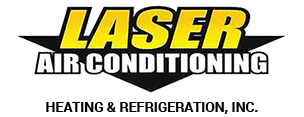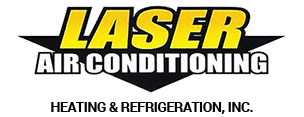Air conditioning systems are essential for maintaining comfort in homes and businesses, especially during the hot summer months. However, like any mechanical system, AC units can experience problems that affect their performance. Troubleshooting your AC can help identify and resolve common issues, ensuring your system operates efficiently and effectively. Here’s a comprehensive guide to troubleshooting your AC system.
1. Check the Thermostat
1.1 Verify Settings:
- Ensure that the thermostat is set to the desired temperature and that it is set to “cool” mode. Sometimes, the thermostat may be accidentally switched to “heat” or “off” mode, which can prevent the AC from turning on.
1.2 Test the Thermostat:
- Test the thermostat by adjusting the temperature setting. If the system doesn’t respond or if the temperature reading seems inaccurate, the thermostat might be faulty. Replacing the batteries in the thermostat can also resolve issues related to power.
1.3 Calibrate the Thermostat:
- If the thermostat seems to be giving incorrect temperature readings, it might need recalibration. Consult the thermostat’s manual or a professional for calibration instructions.
2. Inspect the Air Filter
2.1 Check for Clogs:
- A clogged air filter can restrict airflow, leading to reduced cooling efficiency and potential system damage. Remove the air filter and inspect it for dirt and debris. If it’s dirty, replace it with a new filter of the same size and type.
2.2 Filter Replacement:
- Regularly replace air filters every 1-3 months, depending on usage and filter type. A clean filter improves airflow, enhances system performance, and prolongs the lifespan of your AC unit.
3. Examine the Circuit Breaker
3.1 Check for Tripped Breakers:
- Sometimes, the AC unit may not turn on because the circuit breaker has tripped. Locate the circuit breaker panel and check if the breaker for the AC unit is in the “off” position. If it is, reset the breaker by switching it back to the “on” position.
3.2 Electrical Issues:
- Frequent tripping of the breaker could indicate an underlying electrical issue, such as a short circuit or overload. If the breaker continues to trip, contact a professional electrician to diagnose and repair the issue.
4. Inspect the Condenser Unit
4.1 Check for Debris:
- The condenser unit, located outside, can accumulate debris like leaves, dirt, and branches. Ensure that the area around the condenser is clear and that the unit itself is free from obstructions. Clean the condenser coils if necessary using a vacuum or a coil cleaner.
4.2 Inspect the Fins:
- Inspect the condenser fins for damage or bending. Bent fins can restrict airflow and reduce efficiency. Use a fin comb to straighten bent fins carefully.
5. Examine the Refrigerant Levels
5.1 Low Refrigerant Levels:
- Low refrigerant levels can cause the AC to blow warm air or reduce cooling efficiency. If you suspect low refrigerant, it’s important to have a professional technician check for leaks and recharge the system. Handling refrigerants requires specialized equipment and knowledge, so it’s best to leave this task to professionals.
5.2 Check for Leaks:
- Look for signs of refrigerant leaks around the evaporator and condenser coils. Leaks can cause a significant drop in refrigerant levels and affect system performance.
6. Inspect the Ductwork
6.1 Check for Leaks:
- Leaks in the ductwork can lead to significant energy loss and reduced cooling efficiency. Inspect the ductwork for visible gaps or cracks and seal any leaks using duct tape or a duct sealant.
6.2 Ensure Proper Insulation:
- Proper insulation of ductwork is essential to maintain the desired temperature and reduce energy loss. Check for damaged or missing insulation and repair or replace it as needed.
7. Examine the Evaporator Coil
7.1 Check for Ice Buildup:
- Ice buildup on the evaporator coil can restrict airflow and cause the system to freeze. If you notice ice on the coil, turn off the system and allow it to thaw. Check for issues such as a dirty filter or restricted airflow that could be causing the freeze.
7.2 Clean the Coil:
- Over time, the evaporator coil can accumulate dirt and debris, affecting its efficiency. Clean the coil using a coil cleaner or by contacting a professional for a thorough cleaning.
8. Test the System’s Airflow
8.1 Inspect Vents and Registers:
- Ensure that all vents and registers are open and unobstructed. Closed or blocked vents can restrict airflow and reduce cooling efficiency.
8.2 Check Airflow:
- Verify that the airflow from the vents is strong and consistent. Weak airflow may indicate issues with the blower fan or ductwork.
9. Assess the Blower Fan
9.1 Check Operation:
- The blower fan is responsible for circulating air throughout the system. Ensure that the fan is operating smoothly and without unusual noises. If the fan is not working, check for issues such as a faulty motor or broken fan blades.
9.2 Clean the Fan:
- Dirt and debris can accumulate on the blower fan blades, affecting performance. Clean the fan blades carefully to maintain proper airflow.
10. Review System Performance
10.1 Evaluate Cooling Efficiency:
- Assess the overall performance of the AC system. If the system is not cooling effectively or is struggling to maintain the desired temperature, there may be underlying issues that require professional attention.
10.2 Listen for Unusual Noises:
- Pay attention to any unusual noises, such as grinding, squealing, or banging sounds. These noises can indicate mechanical problems or issues with the system’s components.
11. Consider Professional Help
11.1 When to Call a Professional:
- If you have performed basic troubleshooting and the AC system is still not functioning correctly, it may be time to call a professional HVAC technician. Complex issues, such as electrical problems, refrigerant leaks, or major component failures, require specialized knowledge and tools.
11.2 Choose a Reputable Technician:
- When selecting an HVAC technician, look for licensed and certified professionals with a good reputation. Check for references, reviews, and certifications to ensure that you receive high-quality service.
Conclusion
Troubleshooting your AC system involves a systematic approach to identifying and resolving common issues that can affect performance. By checking the thermostat, air filter, circuit breaker, condenser unit, refrigerant levels, ductwork, evaporator coil, airflow, blower fan, and overall system performance, you can address many common problems on your own. For more complex issues, seeking the help of a professional HVAC technician is essential to ensure that your system is repaired and maintained correctly. Regular maintenance and timely troubleshooting can help keep your AC system running efficiently, providing reliable cooling and comfort throughout the year.

